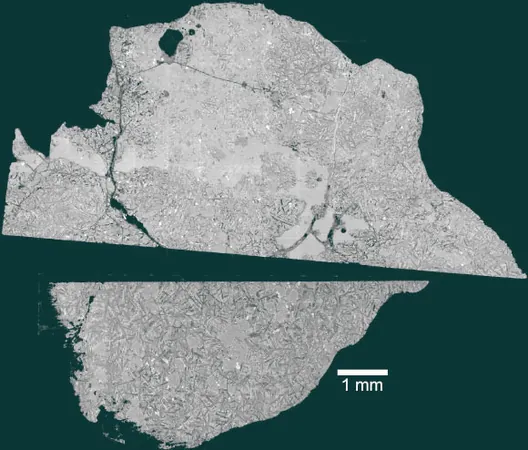
Did Mars Have Rings? Unraveling the Mysteries of Phobos and Deimos
2025-06-06
Author: John Tan
Unlocking the Secrets of Mars' Moons
For years, the origins of Mars' two enigmatic moons, Phobos and Deimos, have stirred heated debates among scientists. While many have favored the theory that they are captured asteroids, the moons' distinct orbits near Mars' equatorial plane suggest a more intriguing possibility: they may have formed from a disk of rock and dust encircling the Red Planet.
A Cataclysmic Creation
This circum-Martian ring likely originated from debris resulting from a colossal impact on Mars, creating a chaotic environment ripe for moon formation. Phobos, the larger of the two, is spiraling inward due to tidal forces, and scientists predict it could break apart in just a few tens of millions of years.
Phobos: A Tumultuous Journey
Traditionally, Phobos was believed to have formed much farther from Mars—about five to six Mars radii away—and gradually migrated to its current orbit at just 2.7 times Mars' radius. However, a new and exciting hypothesis emerged in 2017. This idea speculates that multiple cycles of moon migrations caused fragments from inner moons to create a ring, within which new smaller moons form, further influencing the dynamics of their orbits.
The Cycle of Life on Mars
This cycle could have occurred up to six times throughout Mars' history, with each new moon being about one-fifth the mass of its predecessor. If this hypothesis holds true, Phobos might just be the latest chapter in a long story of lunar creation and destruction, estimated to be only 100 million years old. Could this also clarify why Deimos has a uniquely tilted orbit?
Ancient Mysteries or New Beginnings?
The question now looms: is Phobos an ancient relic, or a newborn moon? To probe this mystery, Matija Ćuk and his colleagues from the SETI Institute and Purdue University performed simulations to explore the orbital evolution of Phobos. Their findings suggest that both the traditional theory and the novel ring-formation model could potentially explain the current orbits of Phobos and Deimos.
Searching for Answers
Yet, the existing data remains insufficient to definitively determine Phobos’ original location or age. Interestingly, the moon’s distinctive shape aligns with what one would expect from the effects of tidal forces at a distance of 3.3 times Mars' radius—where the outer edge of such a disk would exist.
Exciting Future Discoveries Await!
To get closer to unraveling these cosmic mysteries, the Martian Moons eXploration (MMX) probe is scheduled to launch in 2026. This JAXA mission aims to gather surface samples from Phobos, providing critical data that may finally shed light on the moon's origins.


 Brasil (PT)
Brasil (PT)
 Canada (EN)
Canada (EN)
 Chile (ES)
Chile (ES)
 Česko (CS)
Česko (CS)
 대한민국 (KO)
대한민국 (KO)
 España (ES)
España (ES)
 France (FR)
France (FR)
 Hong Kong (EN)
Hong Kong (EN)
 Italia (IT)
Italia (IT)
 日本 (JA)
日本 (JA)
 Magyarország (HU)
Magyarország (HU)
 Norge (NO)
Norge (NO)
 Polska (PL)
Polska (PL)
 Schweiz (DE)
Schweiz (DE)
 Singapore (EN)
Singapore (EN)
 Sverige (SV)
Sverige (SV)
 Suomi (FI)
Suomi (FI)
 Türkiye (TR)
Türkiye (TR)
 الإمارات العربية المتحدة (AR)
الإمارات العربية المتحدة (AR)